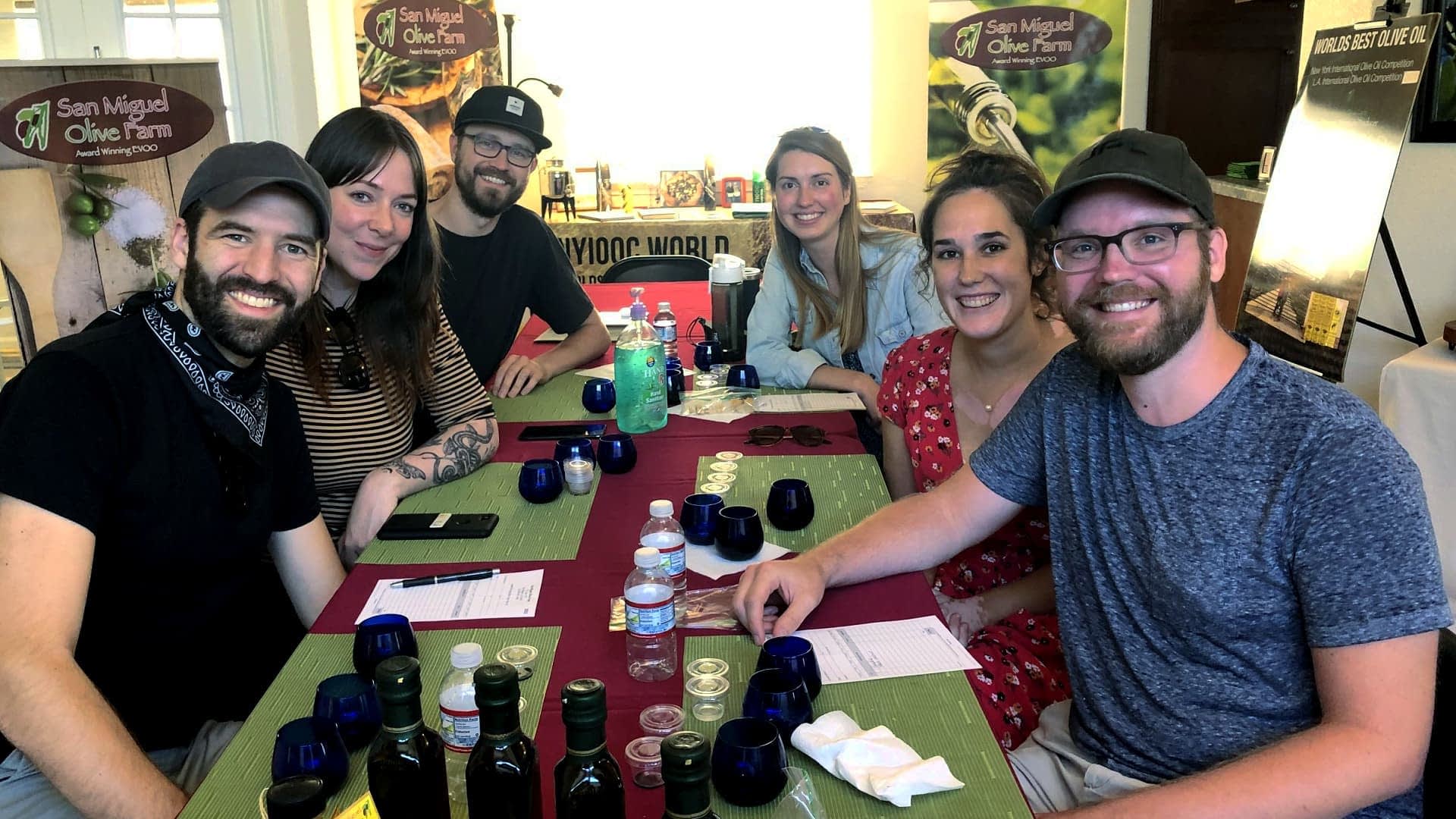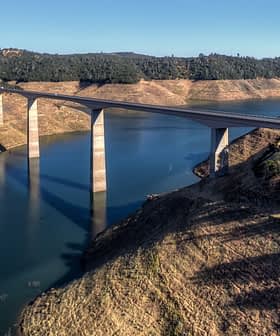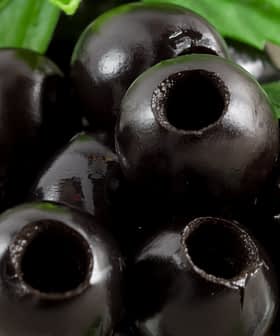Agritourism is surging on the Central Coast of California, and visitors are swapping the trek to Greece, Italy or Spain for California to sample award-winning extra virgin olive oils.
The area’s tourism industry is soaring, with visitors spending $2.15 billion (€2 billion), and local producers are responding to the growing interest in educational agrotourism by offering tastings, tours and on-farm experiences.
If there is a passion for what we do as growers, people notice that. If farm visits are good in quality, exciting and interesting, you will have it made.
“In the last few years, we are getting many more requests to have what’s best described as a ‘farm experience,’” Shaana Rahman, co-owner of Boccabella Farms and chair of the board of directors of the California Olive Council, told Olive Oil Times.
“We’re fielding calls from RV groups and people who love camping and want to be immersed in farm life, albeit for just a night or two, and get to know how olive oil is made,” she added.
See Also:Agritourism Takes Off at Arizona’s Queen Creek Olive MillRahman said olive oil tourism is evolving from olive oil tastings to more immersive learning opportunities about farming and milling.
“They are excited to have a tour through the orchard, touch the trees, see the fruit, and listen to the steps we take from tree to table to make extra virgin olive oil,” she said.
After a significant decline due to the Covid-19 pandemic, officials believe the industry fully recovered in 2023 based on various tourism-related indicators.
According to Visit California, a nonprofit, travel spending in the Golden State exceeded $134 billion (€125 billion) in 2022, nearly double the low watermark in 2020 and slightly below the levels reached in 2018 and 2019.
Some producers are capitalizing on increased interest in their regions. “Paso Robles and San Miguel have become a tourist destination,” Richard Meisler, the co-owner of San Miguel Olive Farm, said.
Indeed, Visit California data indicate that 2022 was a record year for tourism in San Luis Obispo County, a hotspot for high-quality olive oil production, with overnight visitors spending more than $2.1 billion (€2 billion), exceeding the previous record set in 2019 by seven percent.
“Our tours have increased along with the sale of our oils, both indoors and outdoors,” Meisler said. “People are cruising in the areas and stop where something looks good. Years ago, one car on the road was exciting. Yes, tourism is on the rise.”
Meisler and his wife, Myrna, hope to take advantage of another good year for travel in 2024 with their tasting room, which offers views of their farm and olive grove.
“The quiet atmosphere, soft afternoon breeze, blue skies, and an occasional bunny rabbit running around are also free,” Meisler said.

A guided tasting on California’s Central Coast. (Photo: San Miguel Olive Farm)
In downtown Paso Robles, Ruth Mercurio confirmed that the area has seen a noticeable increase in agritourism.
“They come in excited to taste, learn, and ask questions,” We Olive’s owner and managing partner told Olive Oil Times. “Many are keen to seek out local olive farms, especially ones with an olive press.”
Mercurio has actively embraced the role of an oleotourism ambassador for the county and said she recommends a range of local olive farms to visitors.
One of the farms she suggests is Kiler Ridge. Co-owner Audrey Burnam said that while wine is the undeniable agritourism attraction in the state, there is an increasing interest in olive oil.
“We see a growing interest from visitors in learning about olive oil and other local farm-produced products like lavender, cheese and mushrooms,” she said.
While the 2023/24 crop year is finishing up in the Golden State, producers said the abundant harvest means there will be plenty of extra virgin olive oil to sample throughout the peak summer tourism season.
“This year’s harvest was the biggest, best, and latest we have ever had,” Rahman said. “The fruit was abundant and beautiful, although the timing of bloom, fruit set, and weather caused the harvest to be much delayed.”
Rahman explained that the harvest is usually finished by the end of November. However, this year, olive picking did not start until the end of November and continued in December and January.
“A January harvest is unprecedented for us, but it was really exciting to do a last, late pick of just the ripest olives for our late-harvest extra virgin olive oil,” Rahman said.
Meisler agreed. “This year, our olive harvest was huge. Ninety-eight percent of our 1,200 trees were loaded,” he said. “The rain was a blessing after a small harvest in 2022 when we had only 40 percent of our normal crop.”
However, the abundant harvest resulted in some smaller growers being unable to harvest all of their fruit due to the sheer quantity and rising labor costs.
“This year, the cost of labor and the density of trees made hand harvesting slower and more costly,” Meisler said. “Giving up so many beautiful olives makes my heart sad. Pruning the trees for easy access should give us another great crop.”
Along with small farmers, local millers also noticed a sizeable increase in business this year.
“2023 was an outstanding harvest season for central coast olive oil producers,” Burnam said. “Olive oil production was at a historic high (more than double last year), and the quality of the fruit was outstanding due to prolonged spring rain, grower control of olive fruit fly, quick time from harvest to milling and delayed freeze which allowed growers to harvest their fruit at the optimal time.”
According to Chuck Davison, the president and chief executive of San Luis Obispo County’s tourism office, 7.47 million people visited the county in 2022, nearly reaching 2019 levels. “Tourism is the number two economic driver in the region, second only to agriculture,” he said.
Substantial efforts have already been made to make the Central Coast a wine and food destination.
“It would be great to see a similar effort to educate the public on the sheer volume of small-scale farming being done on the Central Coast and the amazing amount of farms producing olive oil,” Rahman said.
Mercurio agreed. “Extra virgin olive oil agritourism is all about building connections – to the land, with the farmers, and to the products,” she said.
“It can turn an agritourist into a lifelong fan and consumer,” Mercurio added. “Agritourism communities tend to be small and linked. The Central Coast extra virgin olive oil farm community is that. I think agritourists are looking for that connection. They want to see it in action.”
Olive producers and businesses note that word-of-mouth referrals and online reviews encourage agritourists to visit and explore the Central Coast.
“The importance of extra virgin olive oil agritourism also lies in the connections the extra virgin olive oil farmers have with other farmers and businesses and how they convey and share that with agritourists,” Mercurio said. “Agritourists aren’t ‘one and done’ when visiting the area.”
“They move through the agritourism landscapes based on research and recommendation – and if the agritourist has a trusted connection with the farmer, they will often go to other agritourism sites and businesses based on that recommendation,” she added. “That connection now has just come full circle. And it starts with knowing your agritourism community and what it can offer the agritourist.”
Rahman said that social media has become a powerful tool to help producers connect with potential agritourism climates and the rest of the community.
“On a personal level, I use my social media channels to share farm life with people from all over the country, encouraging them to visit the Central Coast and support local farmers,” Rahman said. “In my capacity as chair of the board of directors of the California Olive Oil Council, we are always talking to people about buying local and supporting our industry.”
Mesiler added that positive reviews on social media and other internet review sites are good for producers. Still, visitors quickly spot a lack of passion or enthusiasm for the project.
“If there is a passion for what we do as growers, people notice that. If farm visits are good in quality, exciting and interesting, you will have it made,” he said.
For Burnham, education is critical to engaging agritourists and turning them into customers.
“We’re now open five days a week for educational olive oil tastings, offer more extensive tours on weekends and have started hosting a few special events where we serve seasonal dishes paired with olive oils,” she said.
Rahman emphasized participation, explaining that this past year, they have done a series of “cook-alongs” throughout California with local chefs, using local ingredients and California olive oil that have been filmed and promoted on social media.
“It has been such a tremendous way to show people not only how to cook with extra virgin olive oil but how to appreciate the bounty that is grown right here in California,” she concluded.









